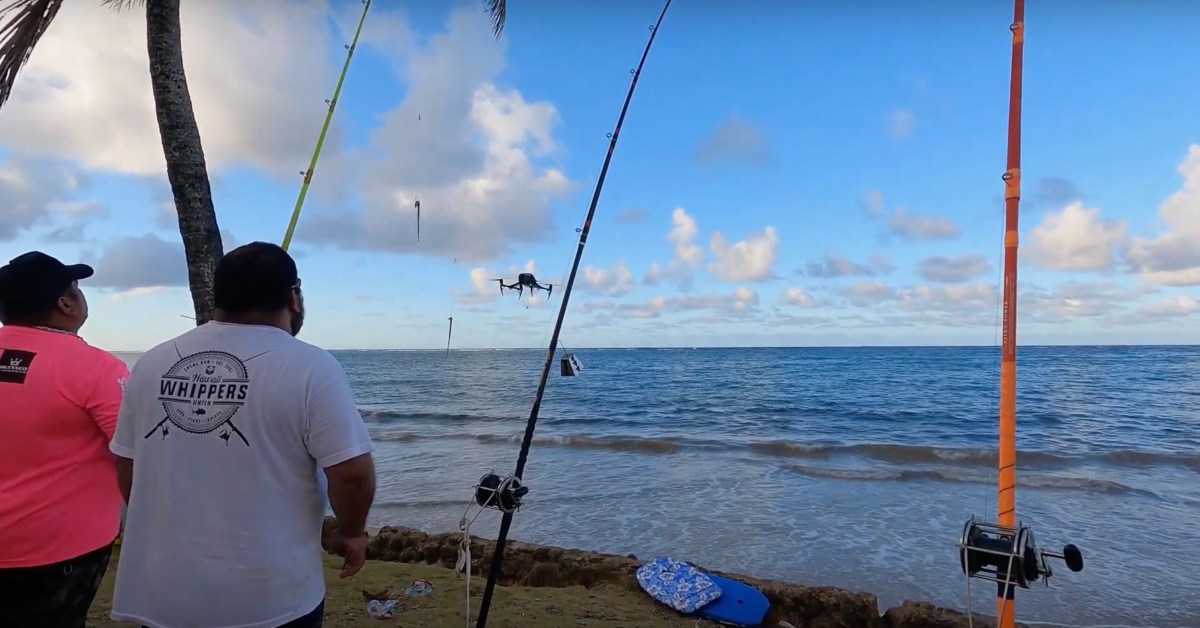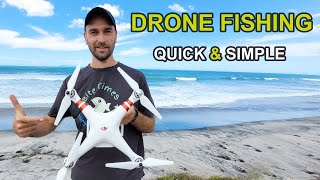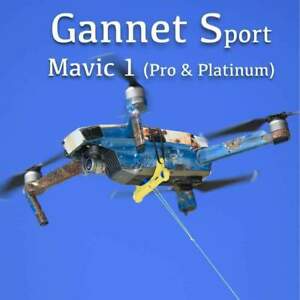
We will be looking at the basics and how to use a drone fishing rig. We'll also be discussing what to consider when choosing your drone, how to charge it, and the payload. Then we'll show you how to get more out of your drone. Keep reading to learn more. You will soon be able to fly the drone of your dreams. Let's get !... started and maybe even catch some fish!
Basic drone fishing equipment
The first thing you will need to drone fish is a set of hooks. The fishing line should be doubled and should be mono or braid. It should be tied with a Cat's Paw Loop, Uni knot or Uni knot. You will need a sinker that weighs between 2 and 8 ounces as well as hooks to attach to the second section. You will also need to attach the end loop and snap swivel lead loops to your drone.
There are many methods to make a fishing helicopter. One basic method involves attaching a hook on the drone's landing gear and spinning the line until it releases. Other low-cost ways include using a dropper to keep the fishing line below the drone and a drop line. The dropper lets you keep the main line down below the drone and not get tangled with the propellers. Accessories such as docks and batteries can be added to fishing drones.
You'll need some additional equipment after you have purchased your basic drone fishing kit. A fishing line that is approximately 700m long, as well as a bait-dropping apparatus are required. These are optional accessories, but they can make your drone fishing adventure more enjoyable. A drone will give you a clearer look of your surroundings so you can spot fish better.

Payload on drone fishing rig
If you're planning on catching a fish using a drone, you need to be aware of the safety measures that need to be taken. Your drone should not be flown in strong winds or rain. Here are some guidelines to follow:
First, ensure that your drone can carry a lot of weight. It will not be stable when loaded with braided line or heavy lures. Also, if you're fishing at a seaside location, the wind may blow the drone off its course. Also, it's important to verify local regulations and laws as some may prohibit you from fishing with a drone. You need to ensure that your drone is strong enough to carry you when you go fishing.
The next step is to determine which accessories you'll need to mount on your drone. To reduce the weight distribution issues, it is a good idea to use a rigging system with a central attachment point. Motor struts or landing gear and the legs of the drone are all good options for attaching. Avoid attaching any payloads to the camera or gimbal as these could cause damage. An easy solution is to tie fishing line at each corner. This can be secured with tape to prevent it from falling out.
The battery life of drone fishing rigs
Before going out fishing with your drone, be sure to check the batteries and the other gear. This will keep your drone's battery charged and allow you to fish instead of worrying about charging it. Some drones come with solar panels that can be charged by car batteries or solar panels. You should start with fully charged batteries. This will make sure your drone is ready when you arrive at your fishing spot.

Another important factor to consider is the drone's flight time. While some models are faster than others, a drone that can fly for just twenty-two minutes will suffice. This is great for those who want to spend hours out on the water with their drone. But you should be aware that a drone with limited endurance will be inoperable and will make it nearly impossible for you to catch fish.
After setting up your fishing rod, attach the fishing clip to the drone's legs or motor struts. Attach the bait and line to the drone. Before you start to fly the drone, lock the reel and then unlock it when you are ready to drop the bait. You will feel tension build up when the line is pulled out. The drone will then drop the bait into water. The battery may not work properly if it isn't charged after each use.
FAQ
What are the rules and regulations for drones operation?
You need to register your drone with the FAA. This registration process includes submitting information about the device, including its weight, size, battery capacity, and operating frequency. A FAA identification number is also required.
What US states do drones are legal in?
A drone can be legally operated for recreational purposes. The Federal Aviation Administration (FAA), has established guidelines that allow the use of small unmanned aircraft systems (UASs). These UASs have to be registered with FAA before they are allowed to fly. These UASs can also be flown by commercial operators if they are allowed to fly under certain conditions.
Can I fly my drone indoors
Yes, your drone can be flown indoors. You just have to ensure no obstacles or hazards inside your home. Avoid flying near heating vents, heating vents and air conditioning units.
How can I keep drones away?
Drones are increasingly popular for home surveillance. However, they pose a threat to privacy and security. If you want to avoid drone attacks, you should install motion sensors around your property and use them to detect any unauthorized flying objects.
Statistics
- With the top 10% making over $100/h and the bottom 10% making as low as $10/h. (dronesgator.com)
- Research and Markets predict a growth rate of 51.1% over the next five years. (thedroneu.com)
- According to the multiple listing service (MLS), houses and apartments with drone photographs are up to 68 percent more likely to sell than those without pictures. (thedroneu.com)
External Links
How To
How To Fly Drones For Beginners
A drone is a remote-controlled aircraft used for aerial photography, cinematography, surveillance, scientific research, and hobby purposes. Drone technology has existed since World War II. DJI introduced their Phantom series of quadcopters in 2010, but commercial use only began in 2010. There have been many types of drones since then, including beginner-friendly drones like the Parrot AR Drone 2.0 and professional-grade multi-rotor crafts like the DJI Mavic Pro.
There are many ways to fly a drone.
-
Remote control – This is when you attach a device to your hand that allows you to control the drone's flight path. There are two types of controllers available: joysticks and on/off switches.
-
Manual Control – This allows remote operation of the drone via GPS coordinates using a smartphone application. The app will give you instructions.
-
Autonomous Flight - This method involves leaving the piloting duties to the drone itself. It's basically flying autonomously without any human intervention. For the autonomous flight to occur, the drone must have a built-in camera and sensors capable of capturing images and data.
-
Triggered Flight: This is similar in concept to manual control. The pilot manually creates a route and the drone then follows it until it reaches that endpoint. The drone automatically lands once the route has been completed and returns to the base.
-
Landing Gear - Some drones come equipped with landing gear that allows them to land safely if they lose power or run out of battery during flight.
-
Goggles-Some pilots use goggles to protect their eyes from debris during operations.
-
Camera - Some drones are equipped with cameras allowing you to capture photos and videos from above.
-
Obstacles. Some drones can have obstacle avoidance technology that stops them from hitting obstacles.
-
Speed - Some drones can travel at speeds over 40 mph.
-
Battery Life - Most drones are capable of lasting between 20 minutes and three hours, depending on the power that you use.
-
Some drones have a range of up to 30 miles, depending on their model.
-
Power source – Some drones require external power sources, others require internal batteries.
-
Weight - Some drones can be as light as 1 pound while others can reach 4 pounds.
-
Size - The size of drones varies from small, easily carried devices to more substantial crafts that weigh in excess of 50 pounds.
-
Price - All drones fall within a specific price range, from high-end models that can cost thousands of dollars to lower-cost options starting at $100.